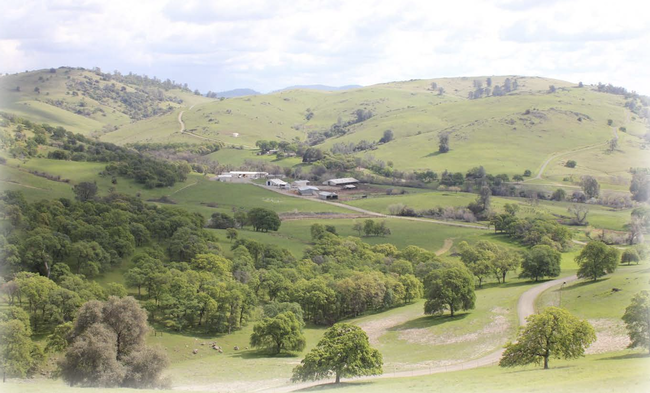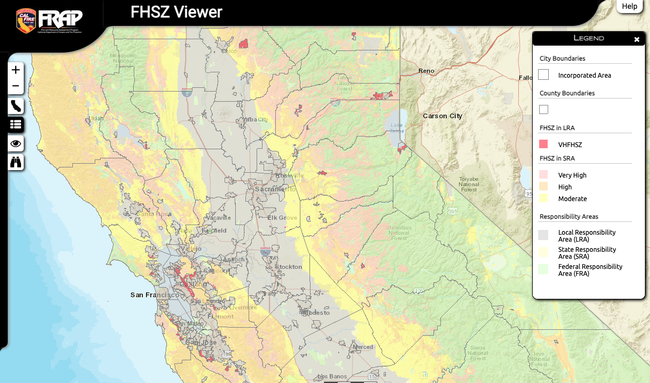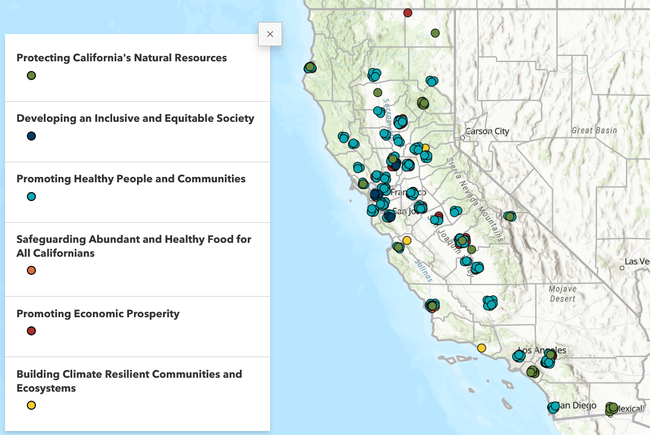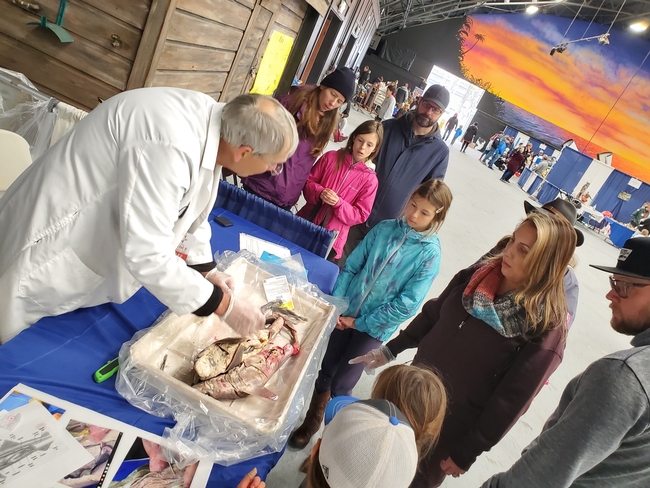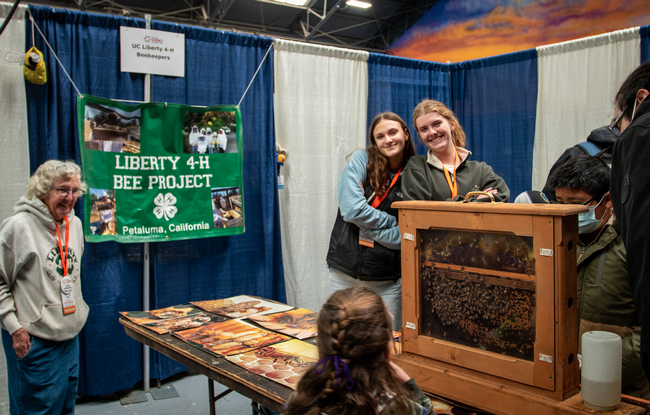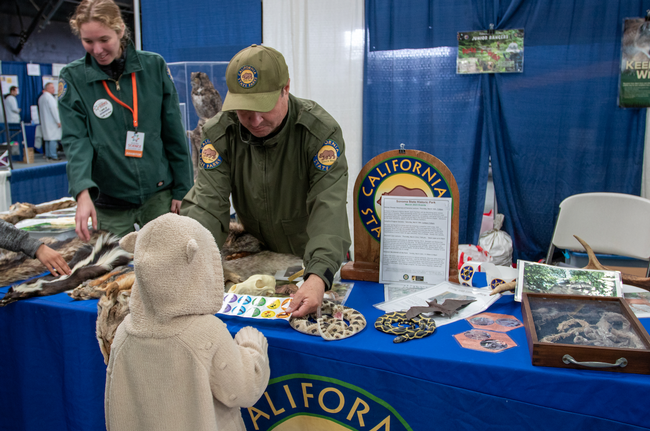- Author: Pamela Kan-Rice
The UC Sierra Foothill Research and Extension Center is soliciting proposals from April 1 to May 12 to support new and continuing research on rangeland and oak woodland ecology and management, beef cattle health, production and management, as well as related agricultural and natural resource themes important to California.
Basic resources and facilities to support research include 5,000 acres of northern Sierra foothill oak woodland–annual grass rangeland as well as irrigated pastures, riparian areas and access to the Yuba River. An approximately 160 head cow-calf herd and access to up to 300 head of steers/heifers to support animal production, animal health and grazing research. SFREC maintains a dry lab for sample processing, a dormitory as well as a large and small conference room.
The Center's Research Advisory Committee will evaluate proposed research for scientific merit and regional need. Approved projects will be eligible for center-provided support, which includes land, labor, technical assistance, equipment and facilities.
Proposals may be submitted through the REC Manage System via the SFREC website: https://sfrec.ucanr.edu/Research/proposal. For full consideration, please submit your proposal by May 12, 2023.
- Author: Amira Resnick, Director, Community Nutrition and Health
Have you wondered how UC ANR can make a difference in advancing health equity?
UC ANR's Community Nutrition and Health unit is proud to host a three-part training series on “Advancing Health Equity” in collaboration with UC San Francisco School of Medicine, Department of Pediatrics, and Center for Child and Community Health. UC ANR educators, supervisors, advisors and specialists from across our statewide programs and initiatives are invited to attend.
This will be an interactive learning opportunity to come together and visualize how UC ANR can address critical health disparities Californians face and put into practice the opportunities outlined in our Strategic Initiatives Health Equity Concept Note (found here on the UC ANR website).
Please save the dates and plan to join this 3-part series:
Session 1: 2-3:30 p.m., Wed. Apr. 5
Build your familiarity and understanding of core concepts related to health equity to establish a shared language about health equity at UC ANR.
Zoom Meeting
https://ucanr.zoom.us/j/92318469375
Meeting ID: 923 1846 9375
One tap mobile
+16699006833,,92318469375# US (San Jose)
+16694449171,,92318469375# US
Session 2: 2-3:30 p.m., Wed. May 3
Identify how existing UC ANR work fits into the concepts and goals related to health equity including addressing the social determinants of health and policy, systems and environmental change work.
Zoom Meeting
https://ucanr.zoom.us/j/96840522425
Meeting ID: 968 4052 2425
One tap mobile
+16699006833,,96840522425# US (San Jose)
+16694449171,,96840522425# US
Session 3: 2-3:30 p.m., Wed. June 7
Inform new areas and approaches UC ANR can work in to advance health equity in the future including transitioning from expert to partner within the communities that we serve.
Zoom Meeting
https://ucanr.zoom.us/j/98465748502
Meeting ID: 984 6574 8502
One tap mobile
+16694449171,,98465748502# US
+16699006833,,98465748502# US (San Jose)
- Author: Pamela Kan-Rice
The California Board of Forestry and Fire Protection has created a public survey to help develop a baseline estimate of work needed to implement Zone 0 – clearing the first five feet surrounding any structure of combustibles such as woody plants, mulch and wood fences. This will inform their economic impact analysis for the regulations, which are intended to protect homes, businesses and communities.
The board has asked UC ANR staff and academics to distribute the survey through their networks to maximize responses.
The following is suggested text for social media and email sharing:
“Your input is needed! UC Cooperative Extension is partnering with the California Board of Forestry and Fire Protection to develop a new defensible space zone for wildfire resilience within the first 5 feet of a structure, known as Zone 0. We're asking California residents and business owners to help inform cost estimates for the implementation of these new science-driven defensible space standards. Please complete the 5-10 minute survey at https://forms.office.com/g/peGA5QuDfn. It's open through April 5.”
- Author: Christina Becker
The UC ANR Impact StoryMap highlights measured changes in conditions resulting from programmatic efforts and serves as evidence of benefit to the public. This StoryMap is intended for an internal audience to help us find and learn from examples of how UCCE advisors, specialists and other academics have documented economic, social, health or environmental impact.
Measured changes in conditions are identified by UC ANR Public Value in the interactive map. This map includes all the changes in condition from the Condition Change Impact Stories compilations from 2018-2021 and will be updated every year. You can click each dot on the map to see more information about the related story and impact. The identified locations are the county offices where the academic who reported the outcome is located.
Please note that data on location where the changes in conditions occur are not currently available. For example, if a UCCE advisor serves more than one county, the dot will be in the county where the advisor is based while the project may be in a different county. The Program Planning and Evaluation team may investigate ways to collect location information for potential future iterations of the map to show external audiences where impacts occur.
As you scroll through the StoryMap, you'll see highlighted examples of UC ANR's impact for each Condition Change.
You can use this tool to:
1) See how your colleagues are measuring a change in condition that you are interested in changing.
2) See how your nearby colleagues are measuring benefits to community in your area.
Leadership and government relations can also glean local impact stories that have significant condition changes for strategic communications and advocacy.
To learn more, view the 26-minute video describing and demonstrating the Impact StoryMap at https://youtu.be/h6XEgMFb_MA or visit Program Planning and Evaluation's Impact Numbers and Stories webpage.
- Author: Pamela Kan-Rice
UC ANR hosted the 11th annual North Bay Science Discovery Day on March 11. The science festival was designed to spark young people's curiosity and wonder for science, technology, engineering and mathematics (STEM). The event was free for the public and held at the Sonoma County Fairgrounds.
“We had an estimated attendance of between 8,000 to 10,000 attendees (even with rain!) participating in 100 hands-on STEM activities offered by 70 organizations,” said Steven Worker, UC Cooperative Extension 4-Hadvisor forSonoma,Napa and Marin counties, who organized North Bay Science Discovery Day.

